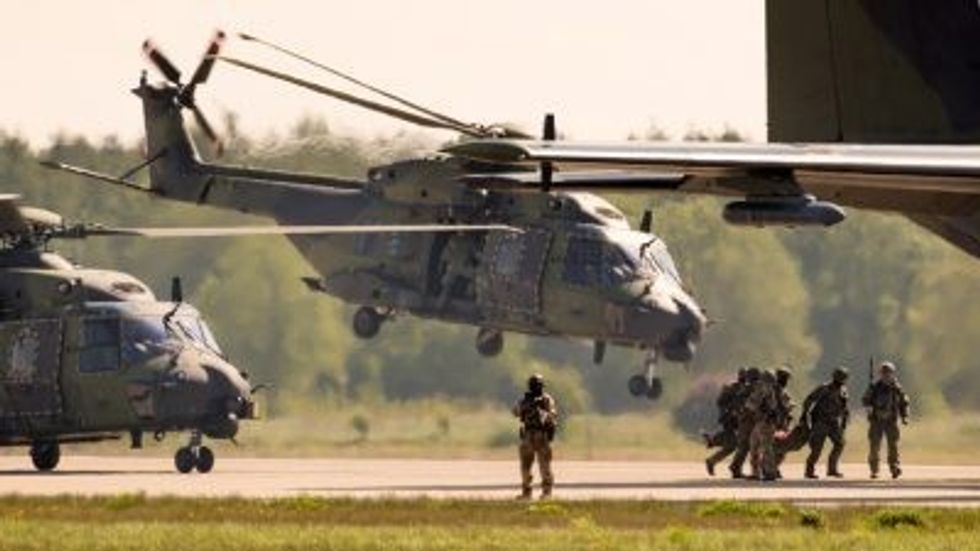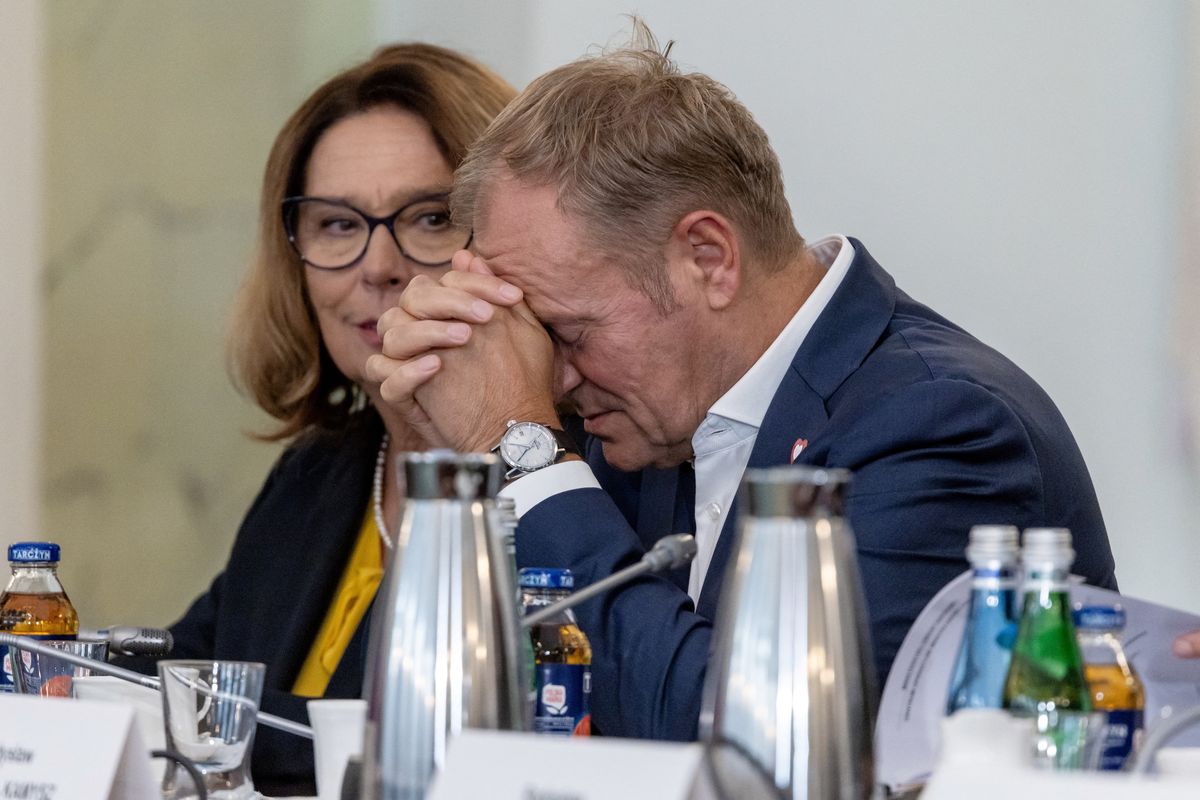As tensions heat up between Russia and the West, cold-war skills are back in play. Norway and Iceland are hosting more than 50,000 troops from 29 NATO countries involved in an intense training scenario across Northern Europe, dubbed Exercise Trident Juncture, with the first phase wrapping up mid-week.
The military exercise is the largest since the Cold War and is viewed by some as a public show of strength to Russia’s recent VOSTOK military exercise, which introduced joint activities with Chinese troops, sending a symbolic message to all who were watching. And a lot of world leaders were watching.
Background:
- NATO’s Exercise Trident Juncture comes amidst rising geo-political tensions between Russia and the West that include Russia’s annexation of Crimea, the ongoing conflict in Ukraine, assassinations of Russians in other countries, and Russian cyber operations against the U.S.
- Trident Juncture also occurs against a backdrop of recent political tension between the U.S administration and NATO over budget issues, and a shifting U.S Defense Strategy that will begin to pivot from a focus on Counter-terrorism to one of near peer adversary conflict.
- Countries in the North of Europe, especially those bordering Russia, have legitimate reason to be concerned given Russia’s recent exercises. Many in the U.S., including Cipher Brief Experts, have stated that Russia has, for too long, been allowed to act with relative impunity, given the almost complete lack of any credible, forceful and serious deterrent to their regional aggression.
- According to a NATO partner website, NATO says that although the North of Europe is of “deep strategic importance to Allied security” this exercise is not directed against a specific threat, but rather focused on defensive capabilities.
- Norway, volunteered, and was chosen by NATO as one of the locations for Trident Juncture 4 years ago, in 2014.
- Some experts however, see this exercise as directly focused on the Russian threat to Northern European countries.
- Moscow has expressed publicly that it is not pleased with the exercise, with the Russians viewing it as “simulating offensive military action”, according to Russian Defense Minister Sergei Shoigu.
- Last week, Russia announced it will conduct missile tests off the Western Coast of Norway, to which NATO responded that it will continue its previously scheduled exercises, occurring in the same region.
The Cipher Brief spoke with General Philip M. Breedlove, former Supreme Allied Commander NATO, to get his perspective on the region, Trident Juncture 18, and the US-NATO relationship:
THE OPERATION ITSELF
Operation Trident Juncture is one of those well announced, well informed and well-intended exercises where NATO is attempting to work on regaining large force deployment and more conventional, more collective, defense skills.
Gen. Philip M. Breedlove (Ret.), Former Supreme Allied Commander, NATO
"Remember that we have been focused on counterinsurgency for nearly two decades in Afghanistan. And so now we are focused on regaining our readiness and skill at collective defense and large force employment capabilities."
Every nation has the right to exercise. And every nation has the right to exercise in international airspace. But every nation also has the responsibility to exercise in a responsible manner. Trident Juncture is an exercise that is announced and it's a recurring exercise. The last exercise occurred in the Portugal, Spain and Mediterranean region. NATO is very straightforward about laying out who is going to be there, how long they're going to be there, and what the objectives are.
THE GOAL
NATO realized several years ago, and it was then reinforced, as we watched Russia invade Crimea and then Ukraine, that we needed to regain our collective defense, large force, conventional employment skills. NATO has gotten really good at COIN over the last two decades, and we now need to get ourselves back to the level of proficiency that NATO needs with those large force capabilities.
Gen. Philip M. Breedlove (Ret.), Former Supreme Allied Commander, NATO
"There are multiple nations inside of NATO that are either alongside of us, or out in front of us in trying to reestablish and regain these capabilities. Some of those are ‘at-risk’ nations that are working really hard to get back into position to be better at collective defense, large force deployment and they are well ahead of the timelines that we established at the various summits, starting in Wales and then Warsaw and Brussels."
THE U.S.-NATO RELATIONSHIP
The U.S.-NATO relationship as it relates to the military's cooperation is strong and getting stronger every day. We have our friction, but the militaries within NATO understand their shortcomings and are making the investments necessary to correct those shortcomings and address the readiness issues. We have the occasional bump in the road when it comes to the more public, political back and forth banter. But what I've seen over the years is that it’s fairly normal that we have these interactions at a political level. What I have seen through all of them is that the alliance understands that what is most important about this alliance is solidarity and commitment to our collective defense requirements. It’s really the ideas, the thoughts, the morals and the values of NATO that is the glue. And while we stretch at it, and we have nations that occasionally stretch at those values, we, in the end, have been able to hold it together. I am very positive on the way ahead for NATO.
RUSSIAN RESPONSE TO TRIDENT JUNCTURE
Remember that Russia has its own series of exercises. They just did a big exercise in the east. And you've seen lots of writing about that exercise and some people concerned about it. I think it's important to watch it and learn from it. I am focused on the series of recurring Russian exercises they call ZAPAD, which means “West”. Their scenario for ZAPAD is very much an offensive scenario towards NATO.
I’ve talked about how it is a nation’s right to exercise, but it is their duty to responsibly exercise. You can draw some conclusions about how NATO’s exercise calendar is completely transparent about where, what, who, how long, etc. And then compare that to what we have seen in past ZAPAD exercises, which are a little less of all of those things. It's not as well understood, it’s not as well defined as to ‘who’. It’s not as well defined as to where, and for how long.
The bottom line is that we are seeing a very different world out there. And not only with the Russians in what Mr. Gerasimov calls “indirect means/asymmetric methods”, what NATO calls ‘hybrid war’. But we're seeing a warfare that is strong in those elements. Also, at the same time, we’re seeing a Russia willing to use force to change internationally recognized borders, I’ve said this on The Cipher Brief before, and we need to remember that Russia has once again put on the table that they will use force to change internationally recognized borders on the European landmass.
Gen. Philip M. Breedlove (Ret.), Former Supreme Allied Commander, NATO
"What we need to talk about is, how do we address this broad approach of pressure that Russia is using in Europe? On one side using military force to change borders, and on the other side asymmetric means/indirect methods. I don't think that we really understand the depth and the breadth of what's going on."
Think about this, they are murdering people in the streets of a foreign capital. They tried to use assassination to keep a member out of NATO. It's not surprising the tools they're using, which are old. What is surprising is the new way that they're using them, and frankly, the audacity with which they’re using them, because for 10 years, we really haven’t pushed back on them very hard. That's the thing to think about.
Prior to assuming his position as SACEUR, General Breedlove served as the Commander, U.S. Air Forces in Europe; Commander, U.S. Air Forces Africa; Commander, Air Component Command, Ramstein; and Director, Joint Air Power Competence Centre, Kalkar, Germany. He was responsible for Air Forces activities, conducted through 3rd Air Force, in an area of operations covering more than 19 million square miles. This area included 105 countries in Europe, Africa, Asia and the Middle East, and the Arctic and Atlantic oceans. As Vice Chief, he presided over the Air Staff and served as a member of the Joint Chiefs of Staff Requirements Oversight Council and Deputy Advisory Working Group. He assisted the Chief of Staff with organizing, training, and equipping of 680,000 active-duty, Guard, Reserve and civilian forces serving in the United States and overseas. General Breedlove is a command pilot with 3,500 flying hours, primarily in the F-16 and has flown combat missions in Operation Joint Forge/Joint Guardian.













